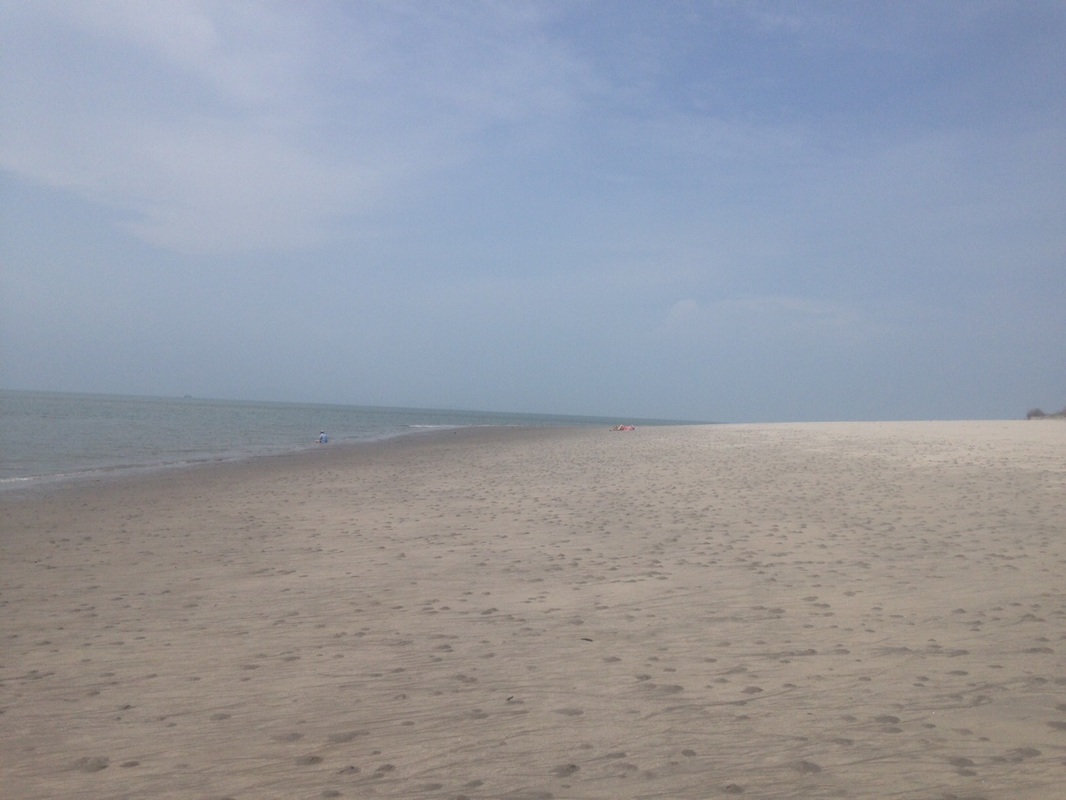|
The weekend beach crowd often drives right past the turn for Punta Chame and heads straight to the stretch of beaches further along the Pan-American Highway, where high rises and throngs of people compete for open stretches of sand. For a pleasant surprise, turn left at the large Punta Chame sign (right after Quesos Chela, the ever-popular roadside stand that sells delicious chicheme (popular Panamanian sweet corn milk drink) and cheese empanadas among other snacks) and drive along the winding road for about 30 minutes to Punta Chame, a narrow peninsula with relatively untouched beaches. Punta Chame has one main road - if you prefer to stroll on the beach by yourself, park on your right-hand side and walk along the right side of the peninsula. If you like a bit more action on the beach and want to try out kite-surfing, head left! The water on the left-hand side is very calm and shallow. Undecided? I usually park close to the end of the road and walk around the tip of the peninsula to see both sides. Punta Chame is an excellent beach for a nice walk or long run given its expansive and relatively flat, well-packed stretches of sand. Depending on the season, you may see several jellyfish.
0 Comments
Barro Colorado Island
A few weeks ago, I traveled to Barro Colorado Island with two friends that were visiting Panama. The Island had been on my ‘to-visit’ list for ages. It is home to one of the branches of the Smithsonian Tropical Research Institute (STRI) and has one of the highest concentrations of flora and fauna in the world. The Island was formed during the construction of the Panama Canal - when the engineers flooded territory to create Lake Gatun the top section of a mountain (now Barro Colorado Island) remained above water. In 1923, the Island became a biological reserve and since has been a laboratory for various long-term ecological studies. STRI organizes day tours of the Island that include a hike with a nature guide and lunch at the STRI Center. We booked our trip online with several weeks of anticipation (it can be hard to secure a space because groups are limited to 10 or so people per day) and followed up with a phone call (the online reservation system seems to be a bit weak – if you don’t hear back from the center after submitting an online request, call!). On the morning of our tour, we drove from Panama City to STRI’s dock in Gamboa (approximately 40 minutes), boarded the ferry and arrived on the Island shortly thereafter. Our nature guide gave us background information on the island and we hit the trail. The walk itself was short and easy – there were several short sections that went uphill but the trail was well developed and not strenuous. Our guide had worked on a number of the research projects taking place on the island and stopped regularly to tell us the work being carried out and general information on the various flora and fauna. Be prepared to learn a lot about ants! We saw three types of monkeys along the way, an owl, various species of birds and a large number of insects. Our guide provided great information and we very much enjoyed the journey – it felt like we were in biology class with the very coolest of classrooms! For anyone interested in exploring and learning more about Panama’s biodiversity, this trip is a must! For information on the day trip, see: http://www.stri.si.edu/english/visit_us/index.php |
Archives
May 2024
Categories
All
|

 RSS Feed
RSS Feed